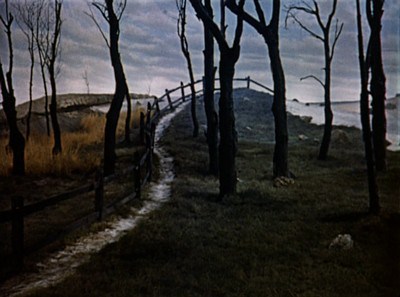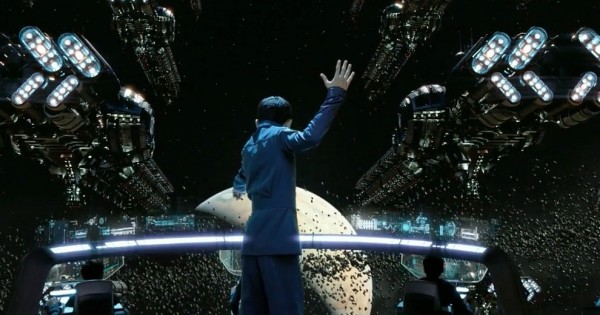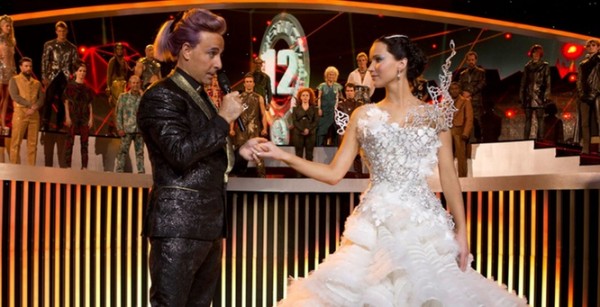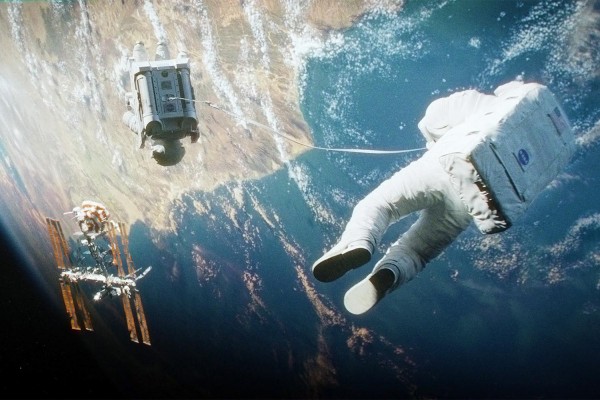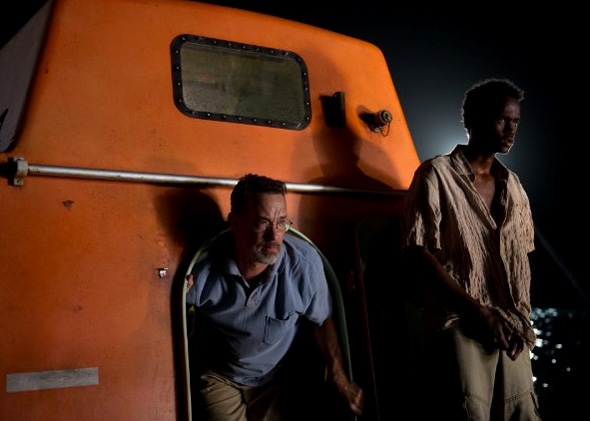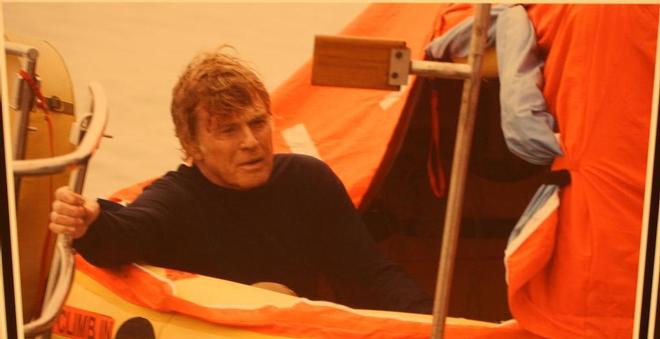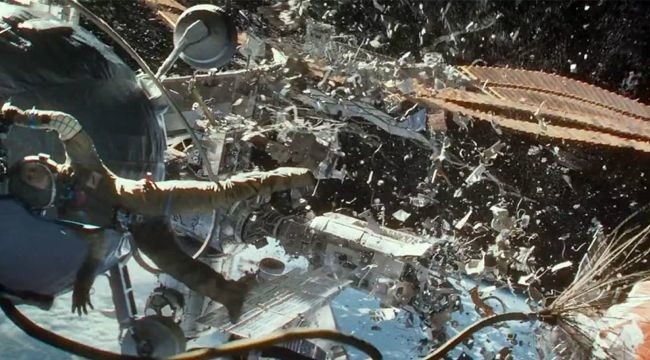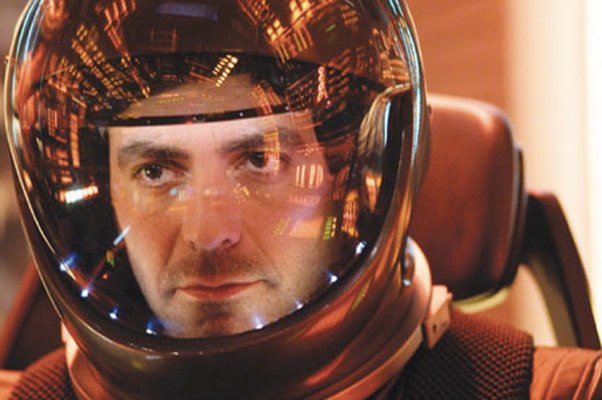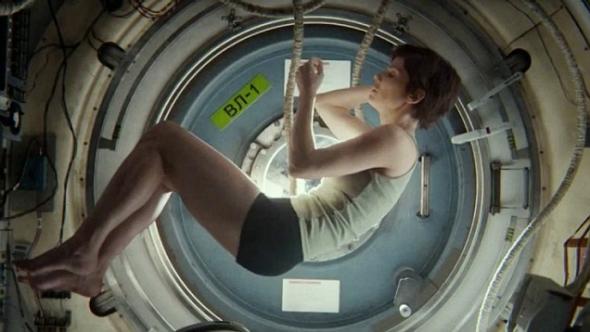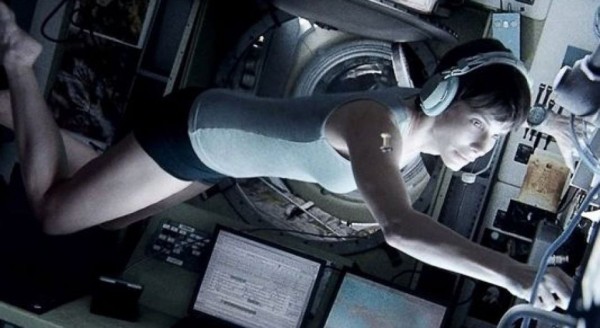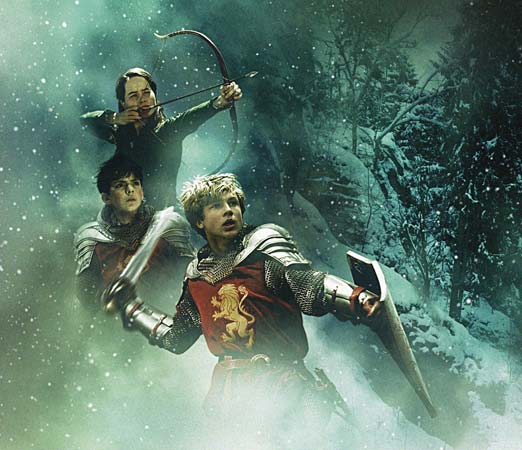
After grown-ups have proven inadequate in dealing with the life-or-death crises of the day in films such as “Gravity,” “All Is Lost,” and “Captain Phillips,” perhaps it’s time that a child came to show the way. Not that the children in recent films such as “Ender’s Game,” “City of Bones,” and most recently, “The Hunger Games: Catching Fire” (opened November 22) – have had much choice in the matter. Instead, hapless adults have shoved their children into the lurch when all else fails. They commit them to messianic quests and suicide missions in order to end an evil reign and save the world.
It’s not a new story. Kids have been called in to bail out adults before, not only in films but in books, many of which that have been made into movies. Dickens could claim a whole shelf of such adaptations if there were any more video stores with shelves to put them on. Jane Eyre, Huckleberry Finn, and numerous fairy tales, going back at least to the myth of Theseus and the Minotaur. But in those stories the child hero has only his or her own fate at stake, or that of a loved one or two, or at times, such as with Theseus, a thriving city-state. These days, though, the survival of whole human race, more or less, rests on some poor kid’s shoulders.
Blame, in part, the YA fantasy book industry, and its seemingly inexhaustible goldmine of franchises pushing that theme, with more than a dozen such YA adaptations planned for production by the studios in the coming months and years.
Though hugely popular now, stories about child heroes are not a new phenomenon. C.S. Lewis and his seven volume “Chronicles of Narnia” (published between 1949-1954) might have been the first to come up with the notion of having adolescents or children engaged in apocalyptic battles with superhuman adversaries in quasi-messianic allegories. His sometimes heavy-handed Christian subtext might have had something to do with the books’ late appearance on the screen and their comparatively poor showing at the box office. Though the Narnia series started out strong with “The Lion, the Witch, and the Wardrobe” (2005), both critically and financially, it met with diminishing returns with “Prince Caspian” (2008) and “Voyage of the Dawn Treader” (2010) and it doesn’t look like we’ll be hearing much more from bossy Christ stand-in, Aslan the Lion, any time soon.
Another prototype of this formula from around the same time, William Golding’s “Lord of the Flies”
published in 1954, adapted into a stark, critically well received film in 1963 by Peter Brook, posited a far less magical scenario than the Lewis books, unless you’re talking about the kind of brute magical thinking explored in James Fraser’s “The Golden Bough.” But both books – one Christian, the other existential, if not nihilistic, one drawing on the desolation of WWII, the other on Cold War angst – don’t have much faith in the adults who are supposedly in control of a chaotic world.
Speaking of the Cold War, I have yet to recover from the terror I experience as a ten-year-old watching “Invaders from Mars” (1953) on the old TV horror movie show “Fantasmic Features.” To this day I have nightmares about drills slowly boring through my skull to insert a crystalline device into my brain.
Needless to say, it has made visits to the dentist problematic.
Like many sci-fi films of that era, the film begins with the landing of alien space craft, which descends into the backyard of 12-year-old David, and burrows into a sandpit.
Who has not felt dread about the sinister sandpit in their backyard?David tells his father, a rocket scientist of some sort, who checks it out, and returns not quite the same affable ’50s dad he was before.
What follows is kind of the kiddie precursor to “Invasion of the Body Snatchers” (1956). Deftly shooting from the point of view of view of the young protagonist, the film evokes the trauma experienced by all kids when they realize that their parents, and perhaps all grown-ups, are actually zombies whose bodies have been taken over by malevolent extraterrestrial entities. With none of the adults to be trusted, it looks like David might have to deal with the problem on his own.
I had strong flashbacks to this movie when watching Gavin Hood’s adaptation of James Olson Card’s 1985 (based on a 1977 short story) YA sci-fi novel, “Enders Game.”
The drilled-in-the- base-of-the-skull implant from “Mars” has returned in this film, with a twist (literal and painful, as it turns out). Young Ender, a prime candidate at age 13 to lead an armada of starships against an alien menace, has a similar device inserted into his brain. In this case, though, it’s not a probe designed to control adult humans, but one installed by adults into young folks like Ender to monitor their every experience. This is a superego with a vengeance.
But though the grown-ups are omniscient, they are far from omnipotent. In fact, they’re desperate. The alien hordes have already invaded twice before and each time the planet has come close to annihilation. Determined not to face this prospect again, Earth’s leaders, a consortium of those tyrannies that seem to be the unavoidable destiny of human society, hope to end the threat once and for all with a devastating pre-emptive attack on the enemy’s home planet. Since for some reason only kids have the conceptual skills or hand-to-eye coordination (associated these days with veteran videogame aficionados; Card, his grotesque opinions about gay rights notwithstanding, was prescient about a lot of things)
to handle such a complex mission in the infinity of outer space. Mentored by wily Colonel Graff (Harrison Ford), Ender alternates between neediness and resentment when it comes to the adults who have commandeered him. He is especially hostile when his training requires him to draw on his lethal skills to dispatch rival child-warriors during his Spartan-like training period. At one point he confronts Graff with the question – are the aliens the enemy, or you?
That same question arises in “Catching Fire,” the adaptation of the second book in Suzanne Collins’s “The Hunger Games” trilogy, and the first directed by Francis Lawrence, who previously put out a surprisingly effective rendition of Richard Matheson’s zombie apocalypse classic “I Am Legend” (2007) . “When you’re in the arena,” says Graff-like mentor Haymitch Abernathy (Woody Harrelson) to “tribute” Katniss Eberdeen (Jennifer Lawrence), “don’t forget who the enemy is.”
At first glance, the enemy’s identity seems obvious. True, Katniss must battle a bunch of other tributes, a repeat of her ordeal in the first movie. But these fellow pawns aren’t the real foe – Haymitch is referring to the whole oppressive system of the dystopic future society of Panem. Here “The Capitol,” an effete, tyrannical aristocracy inhabiting a latter-day Roman Elysium of excess and cruelty, dominates and exploits the 12 districts of the futuristic state of Panem. A revolution against the Capitol 75 years earlier failed, so as punishment each starving district must supply two youthful tributes, aged 12 to 18, to fight to the death in the annual “Hunger Games.” A high-tech kind of “circenses,” as it were, but for the impoverished multitudes, not much in the way of panem.
But, as is the case in “Ender’s Game,” the enemy remains ambiguous, and, by the end, it is unclear who is manipulating whom, especially with Philip Seymour Hoffman in full reptilian mode as the master of the games, Plutarch Heavensbee.
Katniss, however, just wants to be left alone. She thinks about fleeing with her childhood friend Gale Hawthorne (Liam Hemsworth) to the primal, paradisal outback beyond the electric fences, living off the land, kind of like the two kids in “Moonrise Kingdom” (2012). But she’s compelled by two opposed forces to play the game. First, the diabolical autocrat of the Capitol, President Snow (Donald Sutherland), who wants to manipulate her celebrity and that of her co-victor partner Peetah Mellark (Josh Hutcherson) into a gaudy romantic fantasy of true love and self-sacrifice to serve as “a distraction so people forget what their real problems are,” as Haymitch explains to her.
But maybe the most compelling obstacle to her escaping her destiny are the oppressed people of Panem themselves, who see her as a symbol of revolution.
Either way, it doesn’t allow Katniss much of a private life. Kind of like Jennifer Lawrence herself, who has established herself as a bigger celebrity in our world of pop culture than her character http://www.huffingtonpost.com/2013/11/21/jennifer-lawrence-meltdown-new-york-premiere_n_4315999.html?ir=New+York has in the world of Panem. Watching her appearances on talk shows that are at least as frivolous as her interviews in the film with hyperactive host Caesar Flickman (Stanley Tucci), it seems clear that she’s conscious of the irony of her position.
Like the film, she poses a curious paradox. Though the subtext of “Catching Fire” subverts the Hollywood fantasies and celebrity culture that distract young people from what is really going, at the same time it also profits from it.



